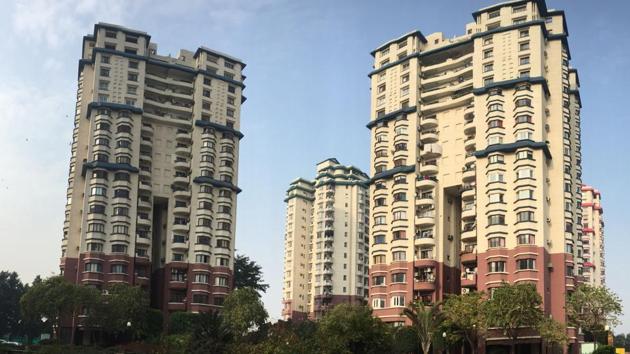Slump? Here’s why the property prices are locked
With sales unlikely to improve anytime soon, developers will find it difficult to get out of the debt trap they find themselves in. From a homebuyer’s perspective, this will keep property prices in check.
Financial leveraging is important for businesses and their growth, but if not managed efficiently it can backfire, as can be seen in the case of real estate. Developers are finding it difficult to service their debt obligations because of low sales and high inventory.

According to a recent report by Liases Foras, a Mumbai-based real estate rating and research firm, “Developers have to scale up sales by 2.5 times to service debt obligation.” However, increasing the sales figure is a tough ask for developers who are finding it difficult to even sustain the current sales volume.
It’s unlikely that sales will improve significantly anytime soon which in turn means that developers will find it difficult to get out of the debt trap they find themselves in. From a homebuyer’s perspective, this will keep property prices in check.
DEVELOPERS TRAPPED
For developers, funding has become a major problem over the last few years.
Gone are the days when advance payment from homebuyers and investors were enough. Other sources like investment from private equity and financing from banks are also not easily available anymore.
While demand from homebuyers has come down significantly, investors don’t find real estate attractive enough. Also, following the Reserve Bank of India (RBI) guidelines a few years ago, which increased risk associated with lending to real estate, most banks restrain themselves from financing real estate developers.
As banks stepped back, non-banking financial companies (NBFCs) started financing the developers, but the recent NBFC crisis has hit that source too.
Until 2018, the NBFC share was robust. “NBFCs share increased from about 30% of total financing to real estate developer to 60% now,” said Samantak Das, chief economist and head of research, JLL India, a real estate consultancy firm.
Besides increase in share of NBFC, total debt of developers also increased significantly from Rs 1.2 trillion in 2009 to Rs 4 trillion in 2018. Fresh flows from NBFCs are a matter of concern.
According to the Liases Foras report, “The existing scenario has exposed the inefficiency within the sector. While debt has grown in a monumental manner and so has inventory, sales did not go up in the same proportion. Having borrowed money from different sources, developers kept adding housing stock into the market without any productivity. Since sales remained abysmal all this while, developers are finding it difficult to meet their debt obligation at this point.”
According to the report, there is an inventory of about 41 months in top eight cities (see graph).
It’s a desperate time for developers. “Many are raising finance at higher rates to repay existing debt as they are expecting the dust of the NBFC crisis to settle within a quarter or two and things to return to normal,” said Arvind Nandan, executive director-research, Knight Frank (India).
FROZEN PRICES OF PROPERTY
According to a joint report by Ficci-Naredco-Knight Frank Real Estate Sentiment Index Q4 2018, “The stakeholders have opined that the buyers are still in the wait and watch mode which will dampen sales. Future sentiments for price appreciation, however, remained marginally down, indicating that the sector does not expect any price rise in the coming six months.”
In the last couple of years, developers have focused more on completing under-construction projects instead of launching new projects. Also, clearing existing inventory is a major challenge, especially in NCR, as most of it is situated in far-flung areas.
At this stage, potential homebuyers are negotiating for cash discounts instead of other offers that developers are offering. “India, given its large population, always has a huge latent demand for housing. If the pricing is right, sales should happen. Developers today are more willing to negotiate on prices compared to a few years ago,” said Nandan.
If things don’t improve, developers may have to look for options that can work to the advantage of buyers to some extent. “If sales remain slow, many developers would have to sell their projects to larger or cash rich developers,” added Nandan.
WHAT SHOULD YOU DO?
If you are planning to buy a house for end use and make the most of the real estate slowdown, choose from the ready-to-move-in inventory.
Besides eliminating risks like delay in construction, you will have a fair idea of what you are getting in terms of amenities, view from the apartment, construction quality and so on. “Negotiation will be absolutely skewed towards homebuyers, developers are ready to bring down prices either directly or through offers and freebies,” said Das.
If that doesn’t work out, look for projects that are near completion. For a recently launched project, go to the RERA website to check the details. Gather information related to the developer’s debt situation and source of funding.
Get Current Updates on India News, Lok Sabha election 2024 live, Election 2024 along with Latest News and Top Headlines from India and around the world.



